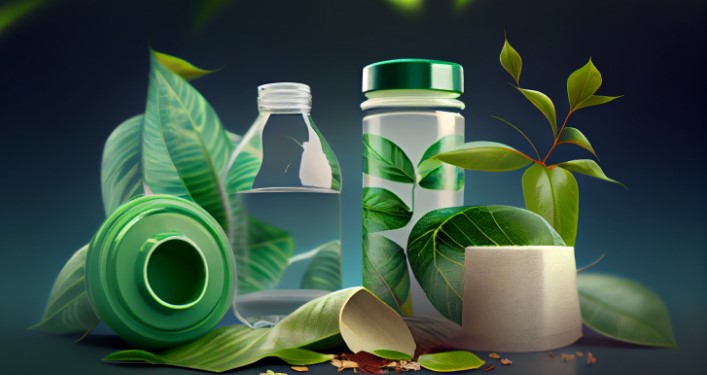In an era where environmental sustainability is a pressing concern, the need for innovative solutions to tackle waste management has become increasingly important. One such solution gaining traction is compostable or biodegradable packaging. It offers a promising pathway to transform waste into a valuable resource, reducing environmental impact and promoting a circular economy. This article explores its future and potential to revolutionise how you package and dispose of products.
Sustainable and Renewable Materials
Compostable packaging refers to materials that can break down naturally in composting environments, transforming into nutrient-rich soil. Unlike traditional packaging materials, like plastic or Styrofoam, it is made from organic and renewable resources, such as plant fibres, starches, and polylactic acid (PLA). These materials are biodegradable and can be safely returned to the earth, leaving behind no harmful residues.
Diverting Waste from Landfills
It is designed to break down naturally in industrial composting facilities or backyard compost bins. It enables the packaging to be diverted from landfills, where traditional materials can take centuries to decompose, and instead be converted into compost that enriches soil quality. Compost is a valuable resource, as it improves soil structure, retains moisture, and provides essential nutrients for plant growth. By incorporating it into waste management systems, you can close the loop in the circular economy and create a sustainable, regenerative system.
Addressing Plastic Pollution
It offers a viable solution to the global plastic pollution crisis. According to the Ellen MacArthur Foundation, 14% of plastic packaging is collected, and most of it is in the oceans and ecosystems. Using biodegradable packaging provides a viable solution to the harmful effects caused by plastic waste, including damage to wildlife and the spread of microplastic pollution. Adopting this eco-friendly alternative can significantly contribute to mitigating plastic pollution and promoting a healthier environment for generations to come.
Innovations and Advancements
The future looks promising, with advancements in research and technology driving innovation in this field. Scientists and engineers constantly explore new materials and manufacturing techniques to improve the packaging’s performance and versatility. For instance, some researchers are developing edible packaging made from seaweed, eliminating waste and providing additional nutritional value. Others are experimenting with mycelium, the root structure of fungi, to create biodegradable and customisable packaging solutions.
Industry Adoption
The adoption of compostable packaging is gaining momentum in various industries. Food service businesses, for example, are increasingly opting for compostable containers, cups, and cutlery to reduce waste and meet consumer demands for eco-friendly options. Retailers and e-commerce companies are also exploring solutions throughout the supply chain to minimise environmental impact. With consumers becoming more conscious of their purchasing choices, it offers a competitive edge to businesses by demonstrating their commitment to sustainability.
Regulations and Standards
Establishing regulations and standards is necessary to ensure consistency and quality. Certifications and labelling systems can help consumers identify genuine packaging and distinguish it from products that may claim to be compostable but do not meet the necessary criteria. Clear guidelines for manufacturers and suppliers will ensure that it meets specific requirements and is environmentally friendly.
Consumer Behaviour and Market Demand
Ultimately, its success relies on consumer behaviour and market demand. As more consumers prioritise sustainable products and packaging, the demand for alternatives will increase. By creating a market, businesses can drive innovation and economies of scale, making compostable options more accessible and cost-effective.
Final Thoughts
Embracing biodegradable packaging presents a promising opportunity to convert waste into a valuable resource, promoting environmental sustainability and the principles of the circular economy. By utilizing renewable materials, it effectively reduces plastic pollution while simultaneously enriching soil quality. This forward-looking approach envisions a future where waste is minimized, and resources are utilized efficiently, paving the way for a more sustainable and resourceful world. However, overcoming challenges such as infrastructure development, consumer education, and regulatory frameworks is essential for widespread adoption. By fostering collaboration, encouraging innovation, and aligning market demand with sustainable solutions, you can pave the way for a future where it becomes the norm, contributing to a greener and more sustainable world.

